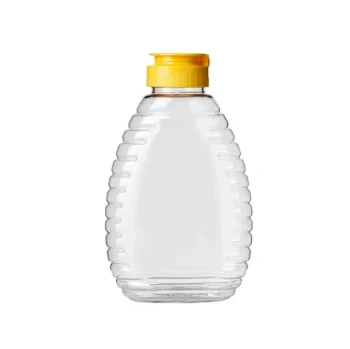The Varroa mite is the single greatest threat to honeybee health worldwide. Officially known as Varroa destructor, this external parasite attaches to honeybees and weakens them by feeding on their vital organ tissue. This direct damage, combined with the deadly viruses the mite transmits, can lead to the rapid collapse of an entire colony if left unmanaged.
The core problem is not just the mite itself, but its role as a vector for disease. Think of it less as a simple pest and more as a "dirty needle" that injects a cocktail of debilitating viruses directly into the bee's body, crippling the colony's immune system from within.

The Anatomy of the Threat: How Varroa Destroys a Colony
Understanding the mite's life cycle and methods of attack is critical to grasping the scale of the danger it poses to a honeybee colony.
The Life Cycle: A Hidden, Exponential Threat
The Varroa mite's reproductive cycle is devastatingly effective. A female mite enters a brood cell just before it is capped, hiding alongside the developing bee larva.
Once sealed inside, she lays several eggs. These mites hatch, mate, and feed on the developing bee pupa in the perceived safety of the cell.
When the young bee emerges, the original mother mite and her mated female offspring emerge with it, ready to infest other bees and repeat the cycle. This allows the mite population to grow exponentially, often unnoticed by the beekeeper.
Direct Damage: Feeding on the Bee's "Liver"
For years, it was believed Varroa mites fed on hemolymph (a bee's "blood"). We now know they primarily consume the fat body, a vital organ responsible for immune function, pesticide detoxification, and energy storage.
This is akin to a parasite draining the function of a human's liver. This feeding weakens the bee, shortens its lifespan, and severely compromises its immune system, making it more vulnerable to other stresses.
Indirect Damage: The Viral Vector
The most destructive impact of the Varroa mite is its role in transmitting viruses. As the mite feeds, it creates an open wound and simultaneously transmits numerous viruses.
The most infamous of these is Deformed Wing Virus (DWV). In a colony with a low mite count, DWV may exist without causing major issues. However, when vectored by mites, the virus amplifies and causes the shrunken, useless wings that are a hallmark of a collapsing hive.
The Challenge of Control
Managing Varroa is an ongoing battle for beekeepers, filled with difficult choices and potential pitfalls. It is not a "one-and-done" treatment.
The Problem of Resistance
Like many pests, Varroa mites can develop resistance to chemical treatments (miticides). Over-reliance on a single treatment method can lead to it becoming ineffective over time.
This forces beekeepers to rotate treatments and adopt a more complex management strategy to stay ahead of the mite's ability to adapt.
The Risk of Re-infestation
Even a diligent beekeeper who successfully treats their hives is not safe. Bees from nearby, untreated colonies can carry mites into a clean hive through natural drifting or "robbing" (stealing honey).
This makes Varroa management a community-wide issue. One unmanaged apiary can serve as a "mite factory" that constantly threatens surrounding healthy colonies.
The Invisibility of the Initial Attack
A common and fatal mistake is to judge colony health by appearance alone. A hive can appear strong and busy while the mite population is silently exploding within the capped brood.
By the time a beekeeper sees visible signs like deformed wings or a dwindling population, the infestation is often severe and the colony may be beyond saving. Regular monitoring, not just visual inspection, is essential.
A Proactive Approach is Non-Negotiable
Effective Varroa management is not about reacting to a visible problem; it's about proactively keeping mite levels low enough that the colony's immune system can function properly.
- If you are a beekeeper: Your primary focus must be implementing an Integrated Pest Management (IPM) plan that includes regular monitoring to know your mite levels and a rotation of effective treatments.
- If you are a gardener or concerned citizen: Your best contribution is to create a healthy environment for all pollinators by planting diverse forage and completely avoiding the use of pesticides, which can further weaken bees' immune defenses.
Ultimately, managing this parasite is the most critical responsibility in modern beekeeping, essential for the survival of honeybees and the vital pollination services they provide.
Summary Table:
| Aspect of Threat | Key Impact |
|---|---|
| Feeding Damage | Consumes the fat body, weakening the bee's immune system and shortening its lifespan. |
| Virus Transmission | Acts as a vector for deadly viruses like Deformed Wing Virus (DWV). |
| Reproduction | Breeds exponentially inside sealed brood cells, often going unnoticed. |
| Control Challenges | Develops resistance to treatments and can re-infest from nearby colonies. |
Protect Your Investment and Your Bees with HONESTBEE
A proactive Varroa mite management strategy is essential for the health of your colonies and the success of your operation. As a commercial apiary or beekeeping equipment distributor, you need reliable, effective supplies to implement your Integrated Pest Management (IPM) plan.
HONESTBEE supplies the beekeeping supplies and equipment you need to monitor and control Varroa mites effectively. From monitoring tools to a range of treatment options, we support wholesale-focused operations like yours with the products necessary to safeguard your hives against this devastating parasite.
Contact HONESTBEE today to discuss your wholesale needs and ensure your apiaries are equipped for the fight against Varroa.
Visual Guide

Related Products
- Adjustable Formic and Acetic Acid Dispenser for Bee Mite Treatment
- Economy Galvanized Beekeeping Honey Bee Smoker for Wholesale
- Metal Queen Bee Excluder for Beekeeping
- Professional Bee Smoker with Elongated Spout and Durable Bellows for Beekeeping
- Wooden Queen Bee Excluder for Beekeeping
People Also Ask
- What is the optimal time for varroa mite control in nucs? Maximize Efficacy with Perfect Timing
- What does Chewed Down Brood (CDB) indicate in bee colonies? A Sign of Varroa Mite Infestation
- What is the focus of hive management during summer? Maximize Your Honey Harvest with Expert Tips
- How can beekeepers ensure their hives survive the winter? A Guide to Colony Survival
- What should be done after treating a colony for varroa mites? A Step-by-Step Guide to Verifying Success



















